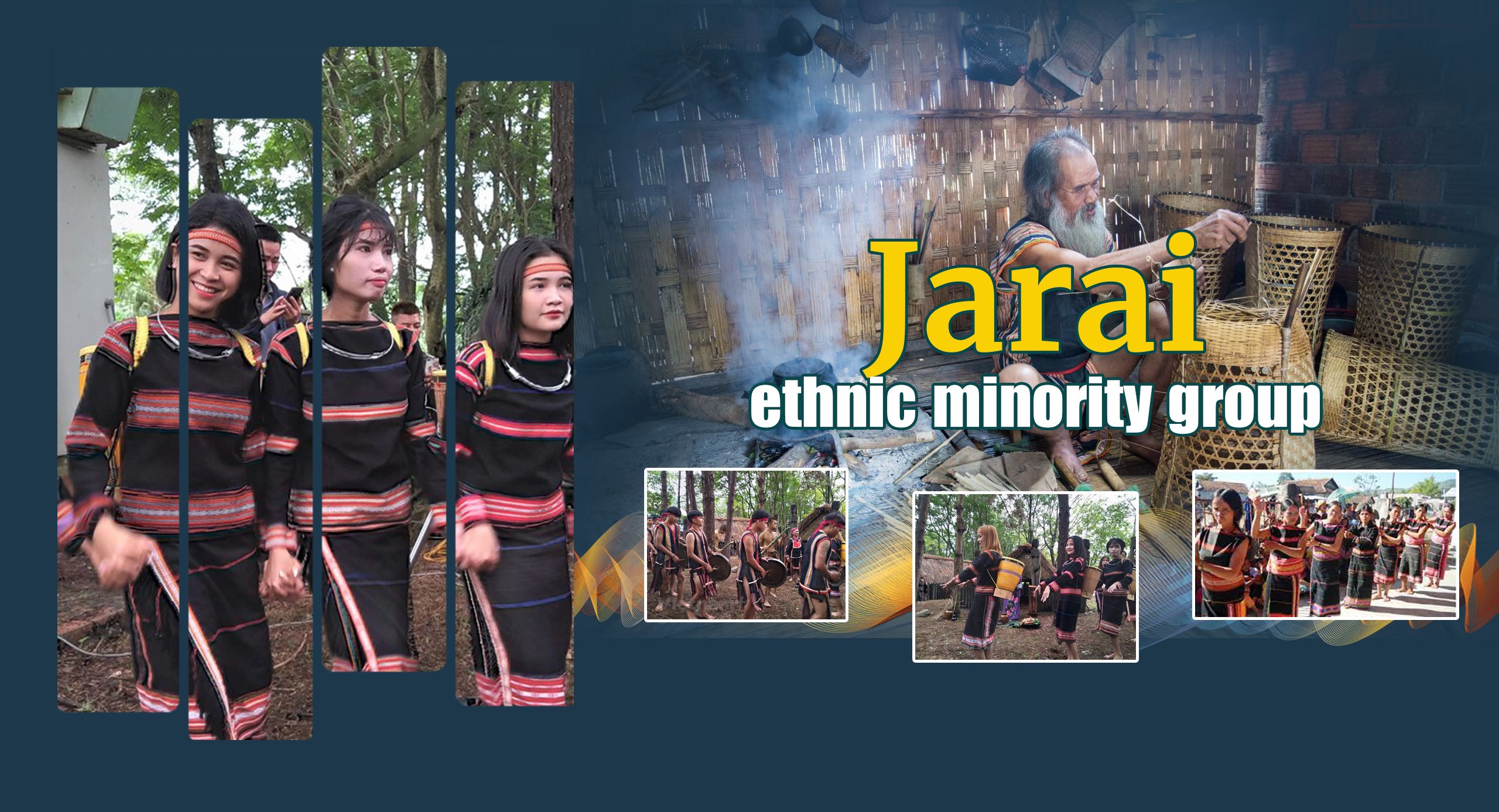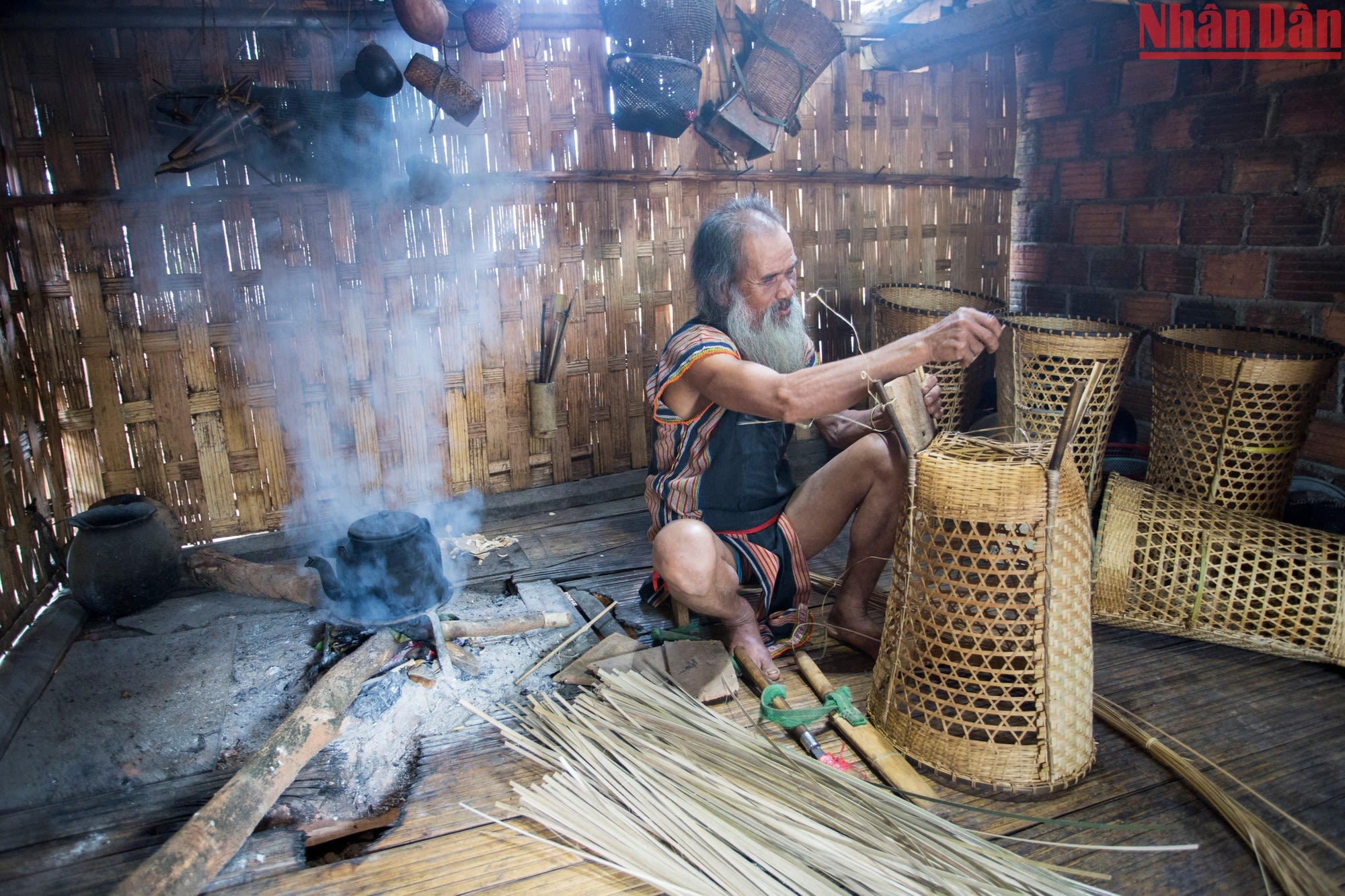
The Jarai people are one of five ethnic groups in the Malayo-Polynesian language group and one of the local ethnic groups in the Central Highlands (Vietnam).
1. History
The Jarai ethnic minority group were among the early inhabitants of the mountains of the Central Highlands, spreading to part of Cambodia. The ancient Jarai society featured a Potaoia (King of Water) and Potaopui (King of Fire), who specialised in worshiping heaven and earth, praying for favourable rain and wind, etc. Before the 11th century, the Ede and Jarai were collectively known as Rang Dey.
In the 15th-16th centuries, Vietnamese feudal history books recorded the titles Thuy Xa (King of Water) and Hoa Xa (King of Fire). Only a man of the Siu family can be king of fire or king of water, and daughters of the Rochom family can be wives of the two kings. Perhaps the word Potao is synonymous with Mtao of the Cham, Tao of the Thai, and Thao of Laos, which all refer to the leader.
Other names: Gio Ray, Cho Ray.
Local groups: Chor, Hdrung (including Hbau, Chor), Arap, Mthur, Tobuan.
2. Population, language
Population: According to the census on the 53 ethnic minorities as announced on April 1, 2019, the total population of the Jarai ethnic minority group is 513,930 people. Of whom, 252,234 are male and 261,696 people are female. 89.5% of the population live in rural areas.
Language: The Giarai are one of five ethnic groups belonging to the Malayo-Polynesian language group and one of the local ethnic groups in the Central Highlands region of Vietnam.
3. Geographic distribution
The Jarai ethnic group resides in the Central Highlands, mainly in Gia Lai Province, in the west of Phu Yen Province, in the south of Kon Tum Province, and in the north of Dak Lak Province.
4. Main features
Food: Plain rice is the main food; the supplementary food is corn. Food with vegetables, salt, chili, vegetable soup, sometimes meat and fish meals. At the party, the can wine should be place in the centre, surrounded by dishes served on bowls, plates or banana leaves to both eat and drink. When drinking, there is singing, dancing, and gong playing.
Costumes: Men wear white cloth loincloths with multi-coloured stripes (toai), on holidays wear indigo loincloths (4m long and 0.30m wide), with patterned borders and colourful tassels at both ends. Black shirt with short sleeves, open armpits, borders of colour patterns running along the sides bearing bold poncho style.
Potao or the village head wears a long indigo shirt, has long sleeves, pulls his head, has a patch of red yarn for buttons and buttonholes from neck to chest. Beneath the buttons is a square red cloth sewn on to mark the shirt. Women wear indigo skirts (1.4m long and 1m wide), with a patterned border running around the hem. The waistband has white or coloured thread tassels. The skirt is not sewn into a tube, so when worn, it is only wrapped around the body so that the two ends are forward. They wear short, tight-fitting, long-sleeve blouses. On the sleeves, there is one embroidered with coloured thread patterns. The place is hot all year round, so both men and women prefer to go topless.
Residence: House on stilts
The architecture has two types: La-yun-pa-style long stilt house, 13.5m long and 3.5m wide is the average size for each house. The house is divided into two parts; one door faces north and the other door is for women - the head of a matriarchal family. There are two kitchens in the house.
Small Hdrung style house (3m wide and 9m long). The height from the ground to the roof beam is not more than 4.5m. The main door leading to the drying floor only faces north. There are two windows on either side of the main door. There is only one kitchen in the house.
Funeral: The Jarai people follow the custom that all people with the same mother's surname are buried in the same grave. A dead man must be carried back and buried in his mother's grave. In that common grave, the coffins are placed next to each other horizontally and then stacked vertically. When the coffin is as high as the mouth of the grave, the four-sided plank is used to bury a few more layers before performing the ceremony of "leaving the grave" (Hoa Lui, Thi Nga or Bo Thi) - a big ritual in the funeral process.
Worshiping: Jarai people follow all living things. Spirits (Yang) are of many types, of which three are prominently mentioned in annual or biennial worship.
The house god (Yang sang) is the force that protects the house and is worshiped in the house. When a new house is built, the ritual of stabbing buffaloes and planting rice must be carried out.
The village god (yang alabon) and the water god (yang ia) are the forces that protect the village and the lives of all members worshiped at the water wharf and the foot of the mountain.
The god of kings (Yang po tao) is performed by the king of fire, the king of water, and the king of wind (ptao agin) to pray for favourable rain, wind, and crops.
In addition, the Jarai people also believe that when they die, souls turn into ghosts. There is a phenomenon attributed to people with harmful magic called ma lai.
Culture-arts: The Jarai have many epics such as Dam San, Xinh Nha, Dam Di, etc., expressed in the form of poetry singing with the accompaniment of the Tung Nung instrument. Gia Rai folk dances have some movements that simulate wars between tribes. Musical instruments such as the To rung, Krong put, Tung Nung, etc., are very popular.

The side occupation of the Jarai people is usually knitting. (Photo: Thanh Dat)
The side occupation of the Jarai people is usually knitting. (Photo: Thanh Dat)
5. Economic conditions
The crop economy is the root of production activities. Land that is subject to labour impact is divided into two categories - uncultivated land named: dike, bamboo, and lon, which is derelict and cultivated land collectively known as Hma, which is owned by each family. Hma include arable plots in the way of half garden, half field; planting, burning, hoeing, and digging holes for seeds. The water fields are ploughed with hoe, shovelling mud, and then switching to ploughing and harrowing using 2 oxen.
The Jarai people raise buffaloes, cows, horses, elephants, pigs, chickens, and dogs. Of which, the buffalo is an equal object in the exchange of precious objects such as gongs, jars and sacrifices in religious rituals. Family occupations include carpentry, blacksmithing and knitting. Craftsmen have made baskets used to store clothing, jewellery, and transport. Weaving with Indonesian-style looms is quite popular, creating a wide canvas with beautiful patterns.